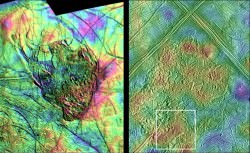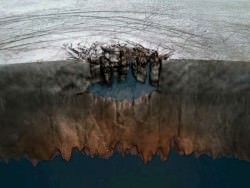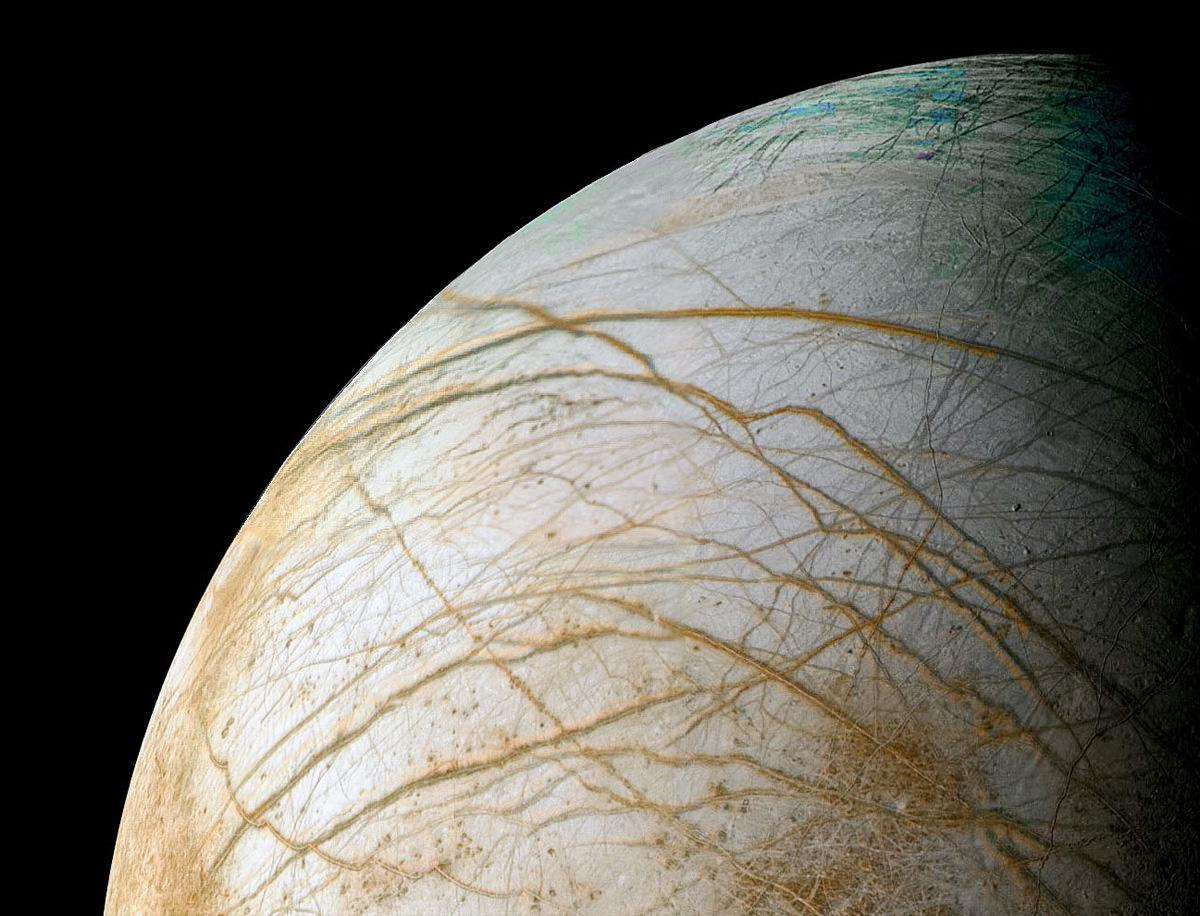[/caption]
New research on Jupiter’s ice-covered moon Europa indicates the presence of a subsurface lake buried beneath frozen mounds of huge jumbled chunks of ice. While it has long been believed that Europa’s ice lies atop a deep underground ocean, these new findings support the possibility of large pockets of liquid water being much closer to the moon’s surface — as well as energy from the Sun — and ultimately boosting the possibility it could contain life.
During a press conference today, November 16 at 1 p.m. EST, researchers Britney Schmidt, Tori Hoeler, Louise Prockter and Tom Wagner presented new theories concerning the creation of “chaos terrain” on Europa.
Chaos terrain is exactly what it sounds like: irregularly-shaped landforms and surface textures on a world. In the case of Europa, the terrain is made of water ice that evidence shows has been loosened by the motion of liquid water beneath, expanded, and then has refrozen into hills and jagged mounds.

These mounds are visible in topographic data acquired by the Galileo spacecraft in 1998.
During the presentation a good analogy for the processes at work on Europa was made by Britney Schmidt, a postdoctoral fellow at the Institute for Geophysics, University of Texas at Austin and lead author of the paper. She demonstrated the formation of Europa’s “mosh pit of icebergs” using a drinking glass partially filled with ice cubes. When water was added to the glass, the ice cubes naturally rose up and shifted orientation. Should the water beneath them refreeze, as it would in the frigid environments found in the Jovian system, the ice cubes would be held fast in their new expanded, “chaotic” positions.
“Now we see evidence that it’s a thick ice shell that can mix vigorously, and new evidence for giant shallow lakes. That could make Europa and its ocean more habitable.”
– Britney Schmidt, lead author
Similar processes have also been seen occurring on Earth, both in Antarctica along the edges of ice shelves and in Greenland, where glaciers continually break apart and flow into the sea – often rolling over themselves and each other in the process.

The importance of these findings is that scientists finally have a model that demonstrates how Europa’s deep liquid ocean interacts with the ice near its surface in such a way as to allow for the transportation of energy and nutrients.
“This is the first time that anyone has come up with an end-to-end model that explains what we see on the surface,” said APL senior planetary scientist Louise Prockter.
With such strong evidence for this process, the likelihood that Europa could harbor environments friendly to life goes up dramatically.
“The potential for exchange of material between the surface and subsurface is a big key for astrobiology,” said Wes Patterson, a planetary scientist at the Johns Hopkins University Applied Physics Laboratory in Laurel, Md., and a co-author of the study. “Europa’s subsurface harbors much of what we believe is necessary for life but chemical nutrients found at the surface are likely vital for driving biology.”
Although the research favors the existence of these lakes, however, confirmation of such has not yet been found. That will require a future mission to Europa and the direct investigation of its icy surface – and what lies beneath.
Luckily a Europa mission was recently rated as one of the highest priority flagship missions by the National Research Council’s Planetary Science Decadal Survey and is currently being studied by NASA.
“If we’re ever to send a landed mission to Europa, these areas would be great places to study,” Prockter said.
Read more about this discovery in the Johns Hopkins University Applied Physics Laboratory press release, or in the NASA news release here. Also, watch the full conference recorded on Ustream below:

